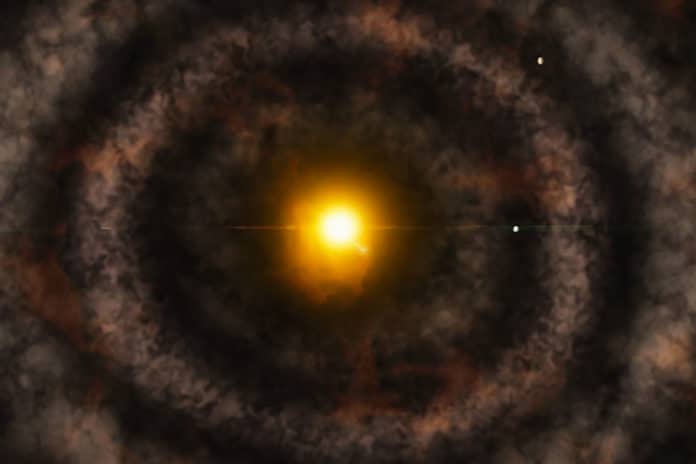According to scientists at MIT and elsewhere, there was a mysterious gap within the protoplanetary disk in the early solar system around 4.567 billion years ago, near the region where the asteroid belt resides today. This protoplanetary disk was used to rotate around the sun in the early solar system.
Benjamin Weiss, professor of planetary sciences in MIT’s Department of Earth, Atmospheric and Planetary Sciences (EAPS), said, “Over the last decade, observations have shown that cavities, gaps, and rings are common in disks around other young stars. These are important but poorly understood signatures of the physical processes by which gas and dust transform into the young sun and planets.”
However, the cause of the gap in the disk remains elusive. One possibility is that the formation of Jupiter. During its formation, the immense gravitational pull of the giant planet could have pushed gas and dust toward the outskirts, leaving behind a gap in the developing disk.
Another possibility is winds emerging from the disk’s surface. The interaction of the strong magnetic field of early planetary systems with a rotating disk of gas and dust generated strong winds. These winds are powerful enough to blow material out, leaving behind a gap in the disk.
This gap acts as a cosmic boundary. It keeps material on either side of it from interacting. According to scientists, this physical separation may have lead to the composition of the solar system’s planets.
Lead author and EAPS graduate student Cauê Borlina said, “It’s pretty hard to cross this gap, and a planet would need a lot of external torque and momentum. So, this provides evidence that the formation of our planets was restricted to specific regions in the early solar system.”
Observations made since the last decade revealed gaps, splits, and cavities in the composition of meteorites. Those that have been analyzed exhibit one of two isotope combinations. Rarely have meteorites been found to exhibit both — a conundrum known as the “isotopic dichotomy.”
Scientists suggested that the gap may have prompted this dichotomy, although no such gap has been directly confirmed.
Scientists thus decided to analyze meteorites for signs of ancient magnetic fields. As a young planetary system takes shape, it carries a magnetic field, the strength, and direction of which can change depending on various processes within the evolving disk. As ancient dust gathered into grains known as chondrules, electrons aligned with the magnetic field in which they formed.
Scientists determined whether the second isotopic, “carbonaceous” group of meteorites have the same magnetic field. They analyzed chondrules, each measuring about 100 microns, from two carbonaceous meteorites discovered in Antarctica.
Using the superconducting quantum interference device, or SQUID, a high-precision microscope in Weiss’ lab, the team determined each chondrule’s original, ancient magnetic field.
To their surprise, their analysis revealed a stronger magnetic field than that of the closer-in noncarbonaceous meteorites. With the formation of young planetary systems, the field is expected to decay with distance from the sun.
In addition, the far-out chondrules are shown to have a stronger magnetic field of about 100 microteslas. The closer chondrules have a field of 50 microteslas.
Scientists used models to simulate various scenarios. They concluded that the most likely explanation for the mismatch in accretion rates is the existence of a gap between the inner and outer regions, which could have reduced the amount of gas and dust flowing toward the sun from the outer regions.
Journal Reference:
- Case S. Barlina, Benjamin P. Weiss et al. Paleomagnetic evidence for a disk substructure in the early solar system. DOI: 10.1126/sciadv.abj6928
